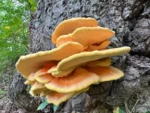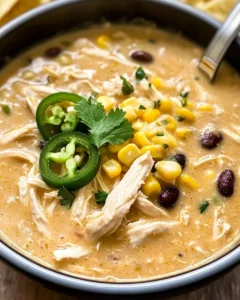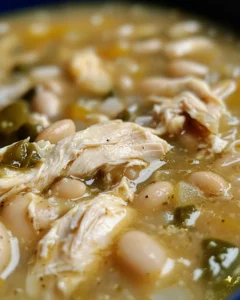Welcome to our exciting journey into the heart of the forest, a place not known for gold but treasures that are equally golden in culinary value – let’s explore the Chicken of the Woods mushroom. This unique fungus offers a meaty texture and flavor that reminds one of chicken,
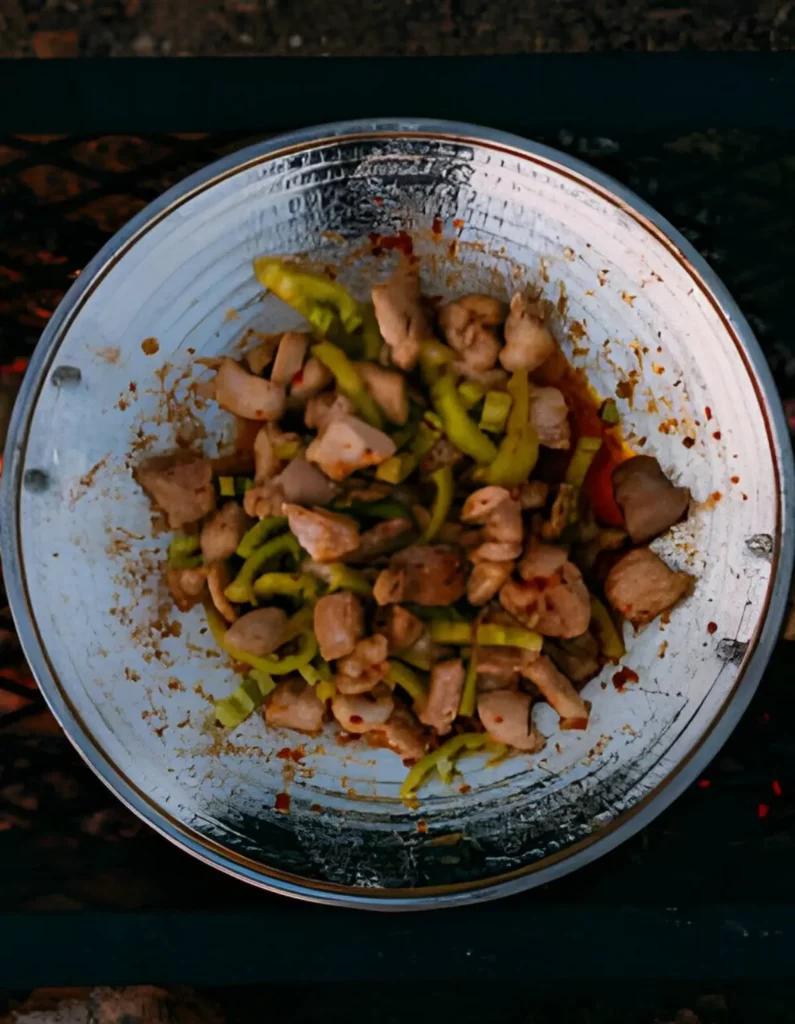
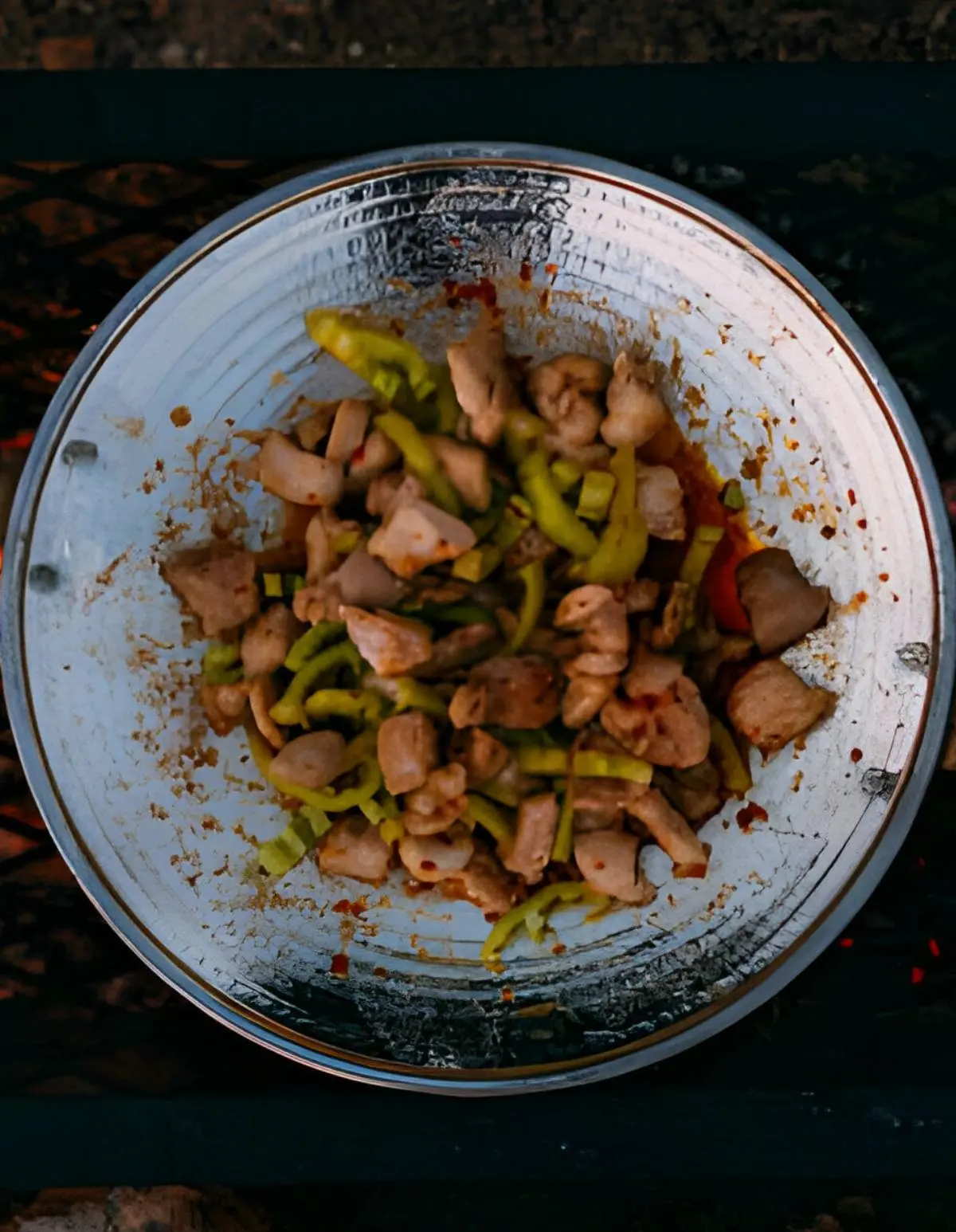
What is Chicken of the Woods?
Chicken of the Woods, or Laetiporus sulphureus, stands out with its bright orange or yellow hues. It grows on trees in various parts of the world and is celebrated for its chicken-like taste. Besides its flavor, it’s known for its high protein content and medicinal properties.
Health Benefits
Packed with antioxidants, vitamins, and minerals, Chicken of the Woods adds nutritious value to any diet. It’s especially known for boosting the immune system and offering anti-inflammatory benefits.
Foraging Tips
Foraging for Chicken of the Woods can be an adventure. Yet, it’s crucial to identify it correctly to avoid poisonous look-alikes. Always go foraging with an experienced guide and use reputable resources.
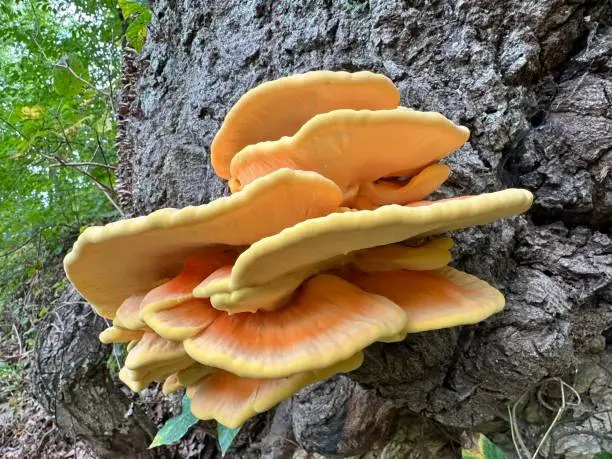
chicken of the woods recipe
Discover the rich, meaty flavor of Chicken of the Woods with this simple yet delicious recipe. Perfect for anyone looking to explore wild mushrooms or add a twist to their vegetarian dishes.
- Prep Time: 15 minutes
- Cook Time: 15 minutes
- Total Time: 30 minutes
- Category: Chicken
Ingredients
- 2 cups Chicken of the Woods mushrooms, cleaned and sliced
- 1 tablespoon olive oil
- 2 cloves garlic, minced
- 1 medium onion, diced
- 1 cup vegetable broth
- 1 teaspoon thyme, dried
- Salt and pepper to taste
Instructions
- Prep the Mushrooms: Ensure your Chicken of the Woods mushrooms are properly cleaned and sliced into manageable pieces.
- Sauté: Heat olive oil in a skillet over medium heat. Add garlic and onion, sautéing until translucent and fragrant.
- Cook the Mushrooms: Add the sliced mushrooms to the skillet, sautéing until they begin to turn golden and slightly crispy.
- Simmer: Pour in the vegetable broth and bring the mixture to a simmer. Let cook for about 10 minutes, or until the mushrooms are tender and the broth has reduced slightly.
- Season: Sprinkle in thyme, salt, and pepper, adjusting to taste. Stir well to combine.
- Serve: Enjoy your Chicken of the Woods Delight hot from the skillet, perfect as a side dish or a main when served over rice or pasta.
Notes
- Foraging Tips: Always ensure proper identification of Chicken of the Woods before consumption. If unsure, consult with an experienced forager or mycologist.
- Storage: This dish is best enjoyed fresh but can be refrigerated for up to 2 days. Reheat gently to preserve the texture.
Nutrition
- Serving Size: Serves 4
- Calories: 120
- Sugar: 2g
- Sodium: 250mg
- Fat: 5g
- Saturated Fat: 0.5g
- Unsaturated Fat: 3.5g
- Trans Fat: 0g
- Carbohydrates: 15g
- Fiber: 3g
- Protein: 6g
- Cholesterol: 0mg
Ingredients:
- 2 cups Chicken of the Woods, cleaned and sliced
- 1 tbsp olive oil
- Two garlic cloves, minced
- One onion, diced
- 1 cup vegetable broth
- 1 tsp thyme
- Salt and pepper to taste
Instructions:
- Heat olive oil in a pan over medium heat.
- Add garlic and onion, and sauté until translucent.
- Include the Chicken of the Woods slices and cook until golden.
- Pour in the vegetable broth and simmer.
- Season with thyme, salt, and pepper.
- Serve hot and enjoy the taste of the forest on your plate!
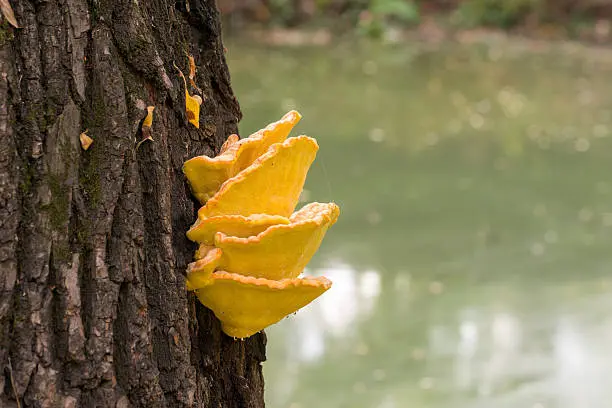
FAQs
- Can I find Chicken of the Woods everywhere? Not everywhere, but it’s common in hardwood forests across North America, Europe, and other parts of the world.
- Is Chicken of the Woods easy to cook? Yes! It’s versatile and can be prepared in many ways similar to chicken.
- How can I store Chicken of the Woods? It’s best consumed fresh but can be refrigerated for up to a week or frozen for extended storage.
In conclusion, Chicken of the Woods is more than just a mushroom; it’s a culinary adventure waiting to be explored. With its numerous health benefits, delicious taste, and versatility in cooking, it’s a must-try for any food enthusiast. Remember to forage responsibly and enjoy the bounty nature offers. Bon Appétit!
Continuing our exploration, let’s dive deeper into how this remarkable mushroom can transform your meals and contribute to a healthy lifestyle.
Expanding Your Culinary Horizons with Chicken of the Woods
Chicken of the Woods offers endless possibilities to enhance your cooking. Its texture and flavor make it a perfect substitute in any recipe for chicken or meat. From stir-fries to soups and even vegan “chicken” nuggets, this mushroom changes the game in the kitchen.
Sustainability and Ecological Impact
Choosing Chicken of the Woods not only benefits your health but also contributes to a more sustainable and eco-friendly culinary practice. Wild foraging has minimal environmental impact compared to traditional agriculture and livestock farming. By incorporating wild-harvested foods into your diet, you’re taking a step towards more sustainable eating habits.
Preservation and Preparation Tips
After foraging, gently brush off any debris and rinse lightly if necessary. It’s essential to cook the mushroom before consuming it to avoid discomfort. If you have an abundance, Chicken of the Woods can be dried, pickled, or frozen for future use. Is it OK to eat ground chicken everyday?
Creative Recipe Ideas
- Vegan “Chicken” Alfredo: Use sautéed Chicken of the Woods instead of chicken for a vegan twist.
- Mushroom Tacos: Marinate slices with lime, chili, and cumin for a tasty taco filling.
- “Chicken” Pot Pie: Substitute Chicken of the Woods in a classic pot pie recipe for a meat-free dish.
- Asian-Inspired Stir-Fry: Mix the mushroom with vegetables and soy or teriyaki sauce for a quick, flavorful stir-fry.
Common Concerns and Safety Measures
While generally safe, some may have allergies or sensitivities to mushrooms. Start with a small portion to see how your body reacts. Also, ensure the mushroom is harvested from healthy, non-toxic trees.
Conclusion: A Gateway to Gastronomic Adventures
Chicken of the Woods is not just a mushroom; it’s a testament to nature’s bounty and the culinary adventures waiting in the wild. Its rich, meaty flavor and versatile uses make it an excellent addition to any meal, offering a sustainable, nutritious alternative to meat. Whether you’re a seasoned forager or a curious cook, integrating Chicken of the Woods into your culinary repertoire is sure to bring excitement and flavor to your table.
FAQs Expanded
- Can Chicken of the Woods be eaten raw? It’s strongly recommended to cook it before eating to ensure safety and digestibility.
- How can I tell if Chicken of the Woods is fresh? Look for firmness, vibrant color, and no dark or soft spots.
- Are there any look-alikes to be aware of? Always consult with a mushroom identification guide or expert to ensure correct identification, avoiding any potentially toxic species.
Exploring Chicken of the Woods opens up a world of culinary potential. Through responsible foraging, creative cooking, and an appreciation for nature, we discover new flavors and traditions that enrich our lives. Join us on this journey to embrace the wild, one mushroom at a time. What do you eat sable with?
Continuing our journey with Chicken of the Woods, we delve into the broader implications of integrating this fascinating mushroom into our diets and lifestyles. Embracing the wild not only brings new flavors to our plates but also aligns with sustainable living and ecological awareness.
Integrating Chicken of the Woods into Your Diet
Incorporating Chicken of the Woods into your diet does more than just diversify your meals. It represents a commitment to consuming whole, unprocessed foods that come directly from nature. This mushroom is not only a substitute for protein but also a source of essential nutrients. Try adding it to salads, using it as a pizza topping, or including it in a hearty stew for those colder evenings. These simple changes can have profound effects on your health and well-being.
Foraging as a Family Activity
The act of foraging for Chicken of the Woods can be incredibly rewarding, not just for individuals but for families as well. It’s an activity that promotes outdoor exercise, imparts valuable knowledge about local ecosystems, and instills a deep appreciation for what nature generously offers us. However, foraging must be approached with respect and mindfulness, ensuring that we do not overharvest and that younger mushrooms are left to grow and propagate, securing future harvests.
The Role of Mushrooms in Ecosystems
Fungi like Chicken of the Woods play a crucial role in their ecosystems. As decomposers, they break down dead wood, returning vital nutrients to the soil and supporting overall forest health. This process underscores the interconnectedness of all living things and the importance of biodiversity for the planet’s wellbeing.
Further Recipe Inspirations
Beyond the recipes already shared, there are countless other ways to enjoy Chicken of the Wood. Here are a few more ideas to inspire your next culinary adventure:
- Mushroom and Wild Rice Soup: A creamy soup that combines Chicken of the Wood with wild rice, carrots, celery, and a blend of herbs for a nourishing meal.
- Grilled Mushroom Steaks: Marinate thick slices in your favorite spices and grill them until crispy on the outside for a simple yet satisfying main course.
- Mushroom Risotto: This classic dish can be given a new twist by stir-frying Chicken of the Woods and folding it into the creamy risotto, offering a rich and delightful experience.
Understanding the Environmental Impact
Opting for wild mushrooms like Chicken of the Wood. goes beyond culinary preferences; it’s a choice that supports sustainability. Wild foraging leaves a negligible carbon footprint compared to conventional agriculture, highlighting the significance of preserving natural habitats and encouraging biodiversity.
Conclusion: Embracing the Wild
Chicken of the Wood. is more than a mushroom; it symbolizes a lifestyle choice that promotes sustainable practices, healthy eating, and a deeper connection with the natural world. As we continue to discover and appreciate the bounty that nature offers, we learn not only about the food we consume but also about how to live in harmony with our environment.
